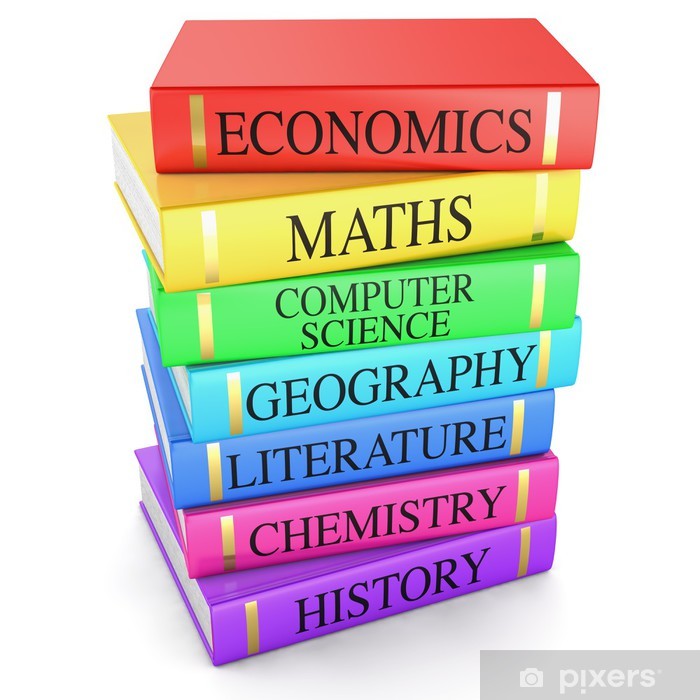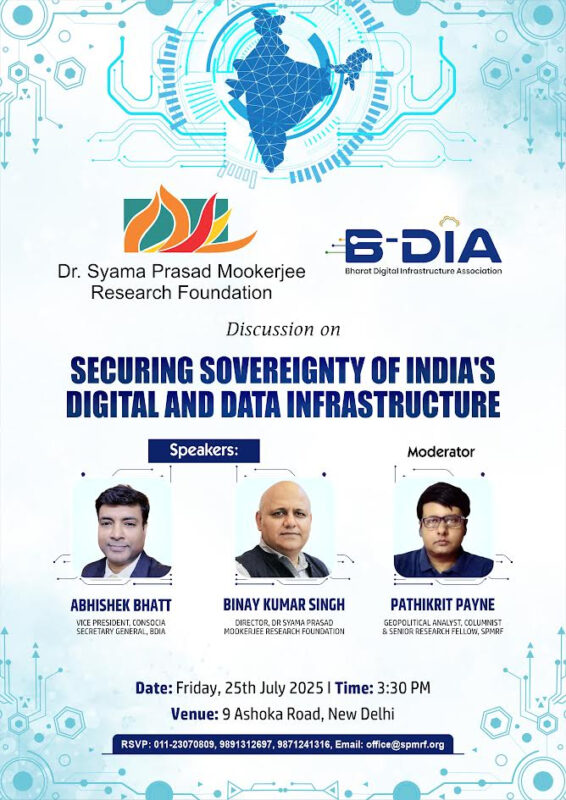The Government of India recently invited suggestions via email from the public for removing the distortions of Indian history that riddle Indian school textbooks. It had fixed July 15, 2021as the deadline for submitting suggestions. Students, teachers, domain experts and members of the public were invited to give their specific suggestions, either in English or Hindi by emailing [email protected].
In a statement put out by the Rajya Sabha Secretariat, the public was informed that “The Department-related Parliamentary Standing Committee on Education, Women, Children, Youth and Sports has taken up for examination and consideration the subject ‘Reforms in The Content and Design of School Text Books.’” The three main focus areas in the circular specifically pertain to: 1) The removal of references to un-historical facts and distortions about India’s national heroes from textbooks; 2) Equal or proportionate inclusion of references to all periods of Indian history; 3) The proper representation of the role of great historic women heroes, including Gargi, Maitreyi, etc. or rulers like Rani of Jhansi, Rani Channamma, Chand Bibi, Zalkari Bai, etc.
In this article, I share my own thoughts on the textbook reform project, highlighting some of the gross distortions in current textbooks that others have exposed and which exemplify the nature of the problem. I subsequently outline some projected transformations and outcomes that any reform effort must be oriented towards in order for society and the country to benefit from such an exercise.
Gross Distortions of History
An article in TFI Post by Abhinav Singh dated July 1, 2021 gives good examples of the distortions of history that Indian history textbooks contain. We reproduce here three examples cited by TFI Post that can stand up as independent case studies:
Example1: “School history books currently in circulation across the country are replete with innumerable botched stories regarding the rich history of Bharat. There are several kingdoms and kings whose reigns are barely mentioned in the books. Freedom fighters who died giving their lives for the motherland are reduced to caricaturist figures while the likes of cruel, blood-hungry rulers like Tipu Sultan are glorified as the apostle[s] of patriotism. The erstwhile ruler of Mysuru, Tipu Sultan massacred more than 700 Mandyam Iyengar families [just] in Melukote [for refusing to convert to Islam], including women and children during his rule. The town, to this day, does not celebrate Diwali and mourns the death and destruction that the horrendous Tipu Sultan wrecked over the holy town. Tipu’s cauldron of barbarity included the blood of thousands of Hindus, and yet he [is] the ‘Tiger of Mysuru’ for [the] Marxist and leftist historians” who have written the textbooks.
Example 2: “Our history books, written by distortion artists like ‘Romila Thapar’ made us believe all throughout our childhood and teenage years that Emperor Ashoka converted to Buddhism and became a pacifist after the Kalinga war where he was overcome with grief after seeing the bloodshed and thousands of dead bodies. However, as surprising as it may sound, Emperor Ashoka converted to Buddhism and became a pacifist almost four years prior to the Kalinga war as the pillar edicts, Mahavamsa and Divyavadana suggest.”
Further, Singh notes, “Ashoka became Buddhist [in the] 4th year of his rule. When he invaded Kalinga [in his] 8th year, Ashoka was a BUDDHIST when he waged Kalinga war. After [the] war, he killed 18,000 Non-Buddhists who allegedly ‘insulted Buddhism. Whom do they finally blame? Yes, Hindus and Hinduism.” Popular history-distortion debunker True Indology had also talked about this on his now suspended Twitter account, TFI Post reminds us, which also reveals how foreign owned neocolonial social media platforms like Twitter routinely and brazenly arrogate upon themselves the role of final arbiters in matters pertaining to India’s internal culture wars.
Example 3: “NCERT history textbook for class 12, titled ‘Themes of Indian History’, falsely claim[s] in one of the paragraphs, ‘All Mughal emperors gave grants to support the building and maintenance of places of worship. Even when temples were destroyed during the war, grants were later issued for their repair – as we know from the reigns of Shah Jahan and Aurangzeb. This coupled with the fact that NCERT had no evidence to back its assertion, invited massive outrage on social media.’”
Reporting on this theme, Times Now News writes “The book in question claims that Mughal emperor Aurangzeb gave grants to rebuild Hindu temples during his reign. However, when Tapinder Singh, a social activist from Bharatpur in Rajasthan, asked the NCERT via an RTI about evidence backing the claim, the autonomous government body was not able to furnish any proof. The RTI activist has sent a legal notice to the NCERT to change the content making the false claim. Following the disclosure, it was claimed that wrong history was being taught by the NCERT book in CBSE schools in the country, not just to the new generation but also to those preparing for competitive exams.” All these absurdities show the distortions and the corruption in the system.
The remainder of this article attempts to articulate the contours of a possible new framework for the teaching of History, one in which History is taught in tandem with Culture, in particular. The educational mess, this situation where people are not taught about their real history, fosters a lack of awareness that is at the root of so many of India’s problems. This is also what is really at the heart of not just the induced religious conversions but also the shocking mass forced religious conversions of people belonging to India’s indigenous faiths like Hinduism and Sikhism that have recently come to light.
It’s a matter of grave concern that these incidents are happening within the boundaries of modern India where Hindus still make up more than 75 percent of the population but are nevertheless hapless victims of rape, violence and forced religious conversions, not just historically but even in 2021 – just because of their identity. The root cause of the imbalances and strife in India’s body politic is that the current educational system has contributed to fostering the creation of antagonistic identities instead of fostering an overarching unity deriving from love and respect for culture of India that is Bharat as enshrined in the Constitution. The educational system is also guilty of misrepresenting and diminishing all that is culturally native to India while glorifying all that is the foreign, alien and hostile to its ethos. Clearly, a new curriculum is the need of the hour.
While it is commendable that input is being sought from all quarters, the specifics of what will be included and what will be excluded in the reformed history textbooks will be ultimately decided by chosen domain experts who may or may not themselves be clear about what such an exercise should lead to. What is imperative though is that the reform, the changes in the curriculum, should help heal and repair the social fabric of India which right now is being torn asunder by all kinds of fissiparous forces. If we are clear on this all-encompassing goal of saving India from being torn apart and if we are clear on the outcomes we want–which should include the correct knowledge of the past and learning the right lessons from the past–we will get better results. To repair India, we must repair the educational system itself.
While this will necessitate lots of other things—a host of other steps and reforms—right now, in this paper, we are just dealing with the question of history textbooks. It is in this context that rather than give suggestions about what specific distortions to remove and what specific omissions to include, I would like to focus public attention on what the proposed textbook reforms should ultimately result in. I am particularly interested in articulating some of the key desirable societal transformations and educational outcomes that a reform effort should be oriented towards. I share these here.
Desired Societal Transformations
The repair of the “History and Culture” curriculum should be such that it should make the following macro level societal transformations possible in a few years:
- Higher ethical standards via character-building and good citizenship values.
- A move away from pathological attachments to ethno-religious, ethno-linguistic, or ethno-regional identities towards the primacy of greater common shared-citizenship based loyalties.
- Mass awareness about foreign funded subversive activities including induced and forced religious conversions and its impact at various levels.
Desired Educational Outcomes
The repair of the “History and Culture” curriculum should be such that it should lead to the following educational outcomes:
- Comprehensive knowledge of Bharatiya History and of Bharatiya contributions to world civilization, science and technology.
- Comprehensive knowledge of World History, in particular the effects of Islam and Christianity on World History and on native peoples and cultures across the globe, including India.
- Patriotism and empathy for what India went through. Knowledge of the sacrifices made.
- Pride in one’s civilizational journey as a people. Deep knowledge of one’s own culture and its richness.
- The ability and desire to impact the future of the globe based on a correct understanding of the past.
- Appreciation for the itihasas (Puranas, Ramayana, Mahabharata) and an understanding of Vedic wisdom (comprising elements like yoga, Indian philosophy, Sanskrit, meditation/inner exploration, and the Gita) which are considered to be core components of the timeless Bharatiya Sanskriti. These must be made part of a common core curriculum for all students moving through the educational pipeline in India.
- Skill in Purva-paksha to thrive in an intellectualized global world.
The above points are not exhaustive but can be a good starting point in the redesign of textbooks and the curriculum as we think about what kind of India we want to strive to build—a broken India where the culture wars of today will lead to civil wars in the future or an India that is internally strong and united in its knowledgeable of its own past. Many recent events have abundantly shown that there are various groups working to balkanize India, including extreme left anarchist-Marxist groups as well as fundamentalist groups with allegiances to two major proselytizing religions who see India as unfinished business, a structure to be dismantled and completely reshaped and re-carved. The cultural and historical deracination of the youth of India due to stupid public policies and colonial era educational ideologies makes their job easier. Reforming the curriculum with an eye on the listed educational outcomes and social transformation goals will be a powerful antidote to all this as well.
Postscript
Competing ideologies create ideological balkanizations and ultimately lead to physical balkanizations. The recent takeover of Afghanistan by the Taliban with the blessings of various foreign powers and the overt support for the Taliban from some quarters within India should be a warning bell. The events in Afghanistan show us how easily a house, when compromised by competing ideologies acting on it, collapses because it has no real internal strength or unity. For India to stay internally secure, it must reform education, reform the teaching of history, and show authentic respect for historical truth. Truth has hitherto been treated as a taboo. Social cohesion built on commonly shared understandings of authentic history would be the surest foundation for an internally united and stable India.
(Author is Professor of Foreign Languages, Department of Communication, Languages, and Arts, Louisiana State University at Alexandria, USA. The views expressed are his own.)
Image Source: https://img.pixers.pics
(The views expressed are the author's own and do not necessarily reflect the position of the organisation)


